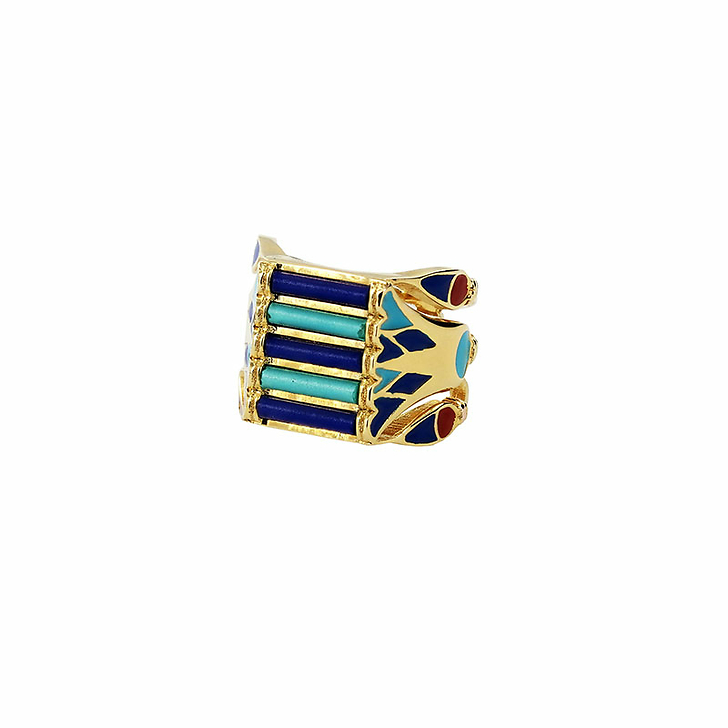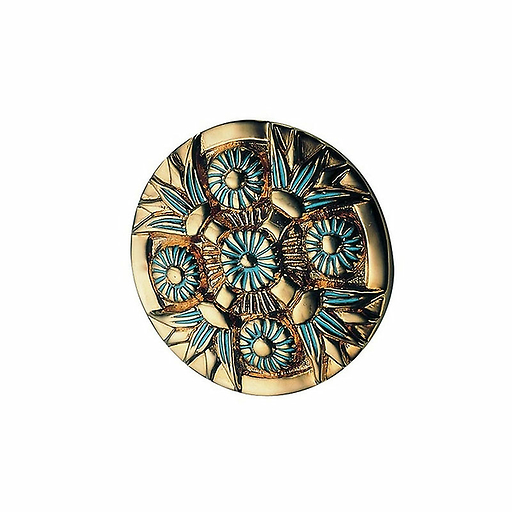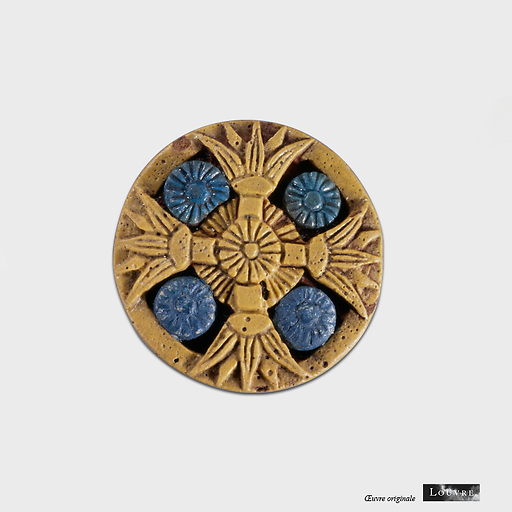This jewel was inspired by a ring known as the Lotus Ring (New Kingdom, circa 1565-1085 BC. Gold, lapis lazuli, turquoise, carnelian - Musée du Louvre, Paris).
Rings appeared during the very first dynasties and were frequently worn as of the Middle Empire. The cloisonné technique used here was highly...
Read more
This jewel was inspired by a ring known as the Lotus Ring (New Kingdom, circa 1565-1085 BC. Gold, lapis lazuli, turquoise, carnelian - Musée du Louvre, Paris).
Rings appeared during the very first dynasties and were frequently worn as of the Middle Empire. The cloisonné technique used here was highly appreciated by the Ancient Egyptians.
Symbolism always played a very important role in Egyptian art. The lotus flower, which frames the setting on each side, is directly linked to the idea of rebirth. It is from this flower that the sun rises every morning. In the Book of the Dead of Ancient Egypt, a chapter is devoted to the rebirth of the deceased under this aspect. Furthermore, the colour red evokes the notion of energy and dynamism, the dark blue of lapis lazuli symbolises the deep blue of the sky at night, while the light blue of the turquoise stone is a symbol of joy.
Close








